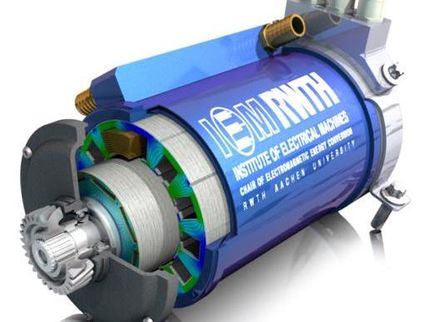Analysis Of The European Miniature and Sub-Miniature Pneumatic Components Market
Advertisement
With a projected annual average growth rate of 4.4 per cent over the period between 2004 and 2009, the EUR 313.2 million mini-pneumatic components market is on course to become the fastest growing sector within the overall European pneumatic components industry. The principal impetus to expansion is expected to come from new applications in end-user sectors such as biomedical, analytical instrumentation, food processing and packaging.
An emphasis on highly specialised and effective components with minimised leak and failure rates are underlining the appeal of mini-pneumatic components in the biomedical and analytical instrumentation arena. Compliance with strict regulations governing these two sectors has generally resulted in more costly components, offering enhanced revenue potential.
Continual innovation and developing applications are expected to translate into steady demand from these two end-user sectors. Already the largest end-user group for mini-pneumatic components, the biomedical sector is expected to generate nearly 20.0 per cent of market revenues by 2009 with the analytical instrumentation sector generating the fourth largest revenue share.
The food processing and packaging industry also offers significant growth prospects. Mini-pneumatic components are being extensively used as automation solutions to reduce labour-related costs. Propelled by new processes and packaging for food products, this end user group is expected to account for the third largest revenue share - 11.9 per cent - of the total mini pneumatic components market by 2009.
Apart from these significant end-user sectors, mini pneumatic components are also finding use in semiconductors and high tech, conveyor systems, transportation, automotive, plastics, chemicals and oil industries. Applications in robotics, animatronics, aerospace and defence and other industrial manufacturing sectors confirm the rising popularity of mini pneumatic components.
Manufacturers are reinforcing these positive trends by closely evaluating and then matching end-user needs to pneumatic solutions. Such initiatives are helping mini-pneumatic components compete for applications that were once fulfilled by small to medium bore-size pneumatic systems.
The simplicity and low cost of pneumatics technology is a major reason for its popularity. Pneumatic components are simple in design, operation and maintenance. A proven, easily programmable technology successfully used in automation, it offers enhanced cost savings over competing systems such as electric drives that are expensive, and have high maintenance costs.
"As long as mini-pneumatic component manufacturers maintain a consistent pricing structure, alternative technologies such as electric drives are not likely to encroach upon these applications," says Frost & Sullivan (http://www.frost.com) Research Manager Mik Sabiers. "The comparative advantage of lower installation prices, lower replacement costs, and exceptional displacement rates should continue to ward off the competition that electric drives offer to larger bore-size pneumatic systems."
At the same time, pneumatic valve manufacturers are finding creative and innovative ways of increasing the flow of a pneumatic valve. This has resulted in the ability of end users to utilise smaller port sizes in their manufacturing systems. In the long term, as more end users are converted to smaller bore size pneumatic automation solutions, revenue potential of mini-pneumatic components is set to grow.
In 2002, mini-pneumatic valves accounted for the largest percentage of revenues of the total mini-pneumatic components market. Their use in new biomedical, analytical instrumentation, and food processing and packaging applications is likely to help this segment garner nearly 47.1 per cent of overall market revenues by 2009. It is expected to be followed by the actuator segment and then the mini-pneumatic filter regulators and lubricators (FRL) segment.
Over 65 companies were active in the European mini-pneumatic components market in 2002. While multinationals such as SMC and Festo dominate, several smaller manufacturers (Koganei, Humphrey, CKD, Lee Valve, and Numatics) with niche-focussed product offerings have been able to effectively compete with the larger, more full line manufacturers.
For all market participants, intensifying competition is promoting price pressures. As competition has focussed on price rather than on quality or features, manufacturers have been forced to reduce prices. There is the risk of the market becoming a commodity-type one. In this situation, innovation, product development and partnering with end users to design customised solutions are likely to be key to success.
"The development or procurement of new and innovative products is essential for the furthering of market share," notes Mr Sabiers. "This strategy can be implemented in three different ways: first, through the propagation of internal R&D departments; second, through the acquisition of companies offering products missing from the existing product line; and third, through a focus on strategic alliances and private labelling."


























































